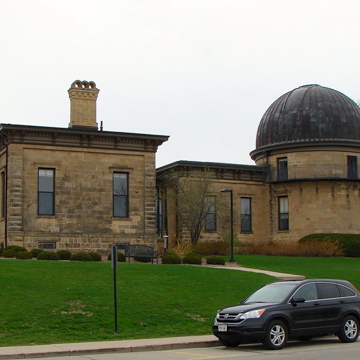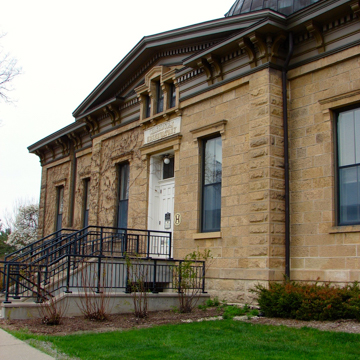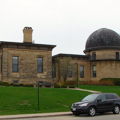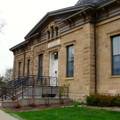Washburn Observatory, on the crest of Observatory Hill, commands an expansive view of the heavens above and a spectacular vista of Lake Mendota below. The Italianate building has a modest residential scale, using locally quarried sandstone blocks, chiseled with a vermiculated surface and laid with beaded mortar joints, above rock-faced stones at the foundation. The simple shed-roofed porch at the east and the octagonal bay window facing south seem domestic, but on the west, a wooden dome rising forty-eight feet identifies the building as an observatory. A large pediment, broken by a stylized Palladian window, marks the observatory’s entrance. Inside, a narrow wooden staircase ascends to the dome, where the original telescope remains. Constructed by Alvan Clark and Sons of Cambridge, Massachusetts, the refracting telescope was the country’s third-largest telescope when it was installed in 1879.
In its heyday, the observatory was a leading astronomical research center. It was here that Joel Stebbins and Albert Edward Whitford created the field of astronomical photoelectric photometry, which measures light from stars. The observatory, closed in 1959, opens its doors regularly for public stargazing.





